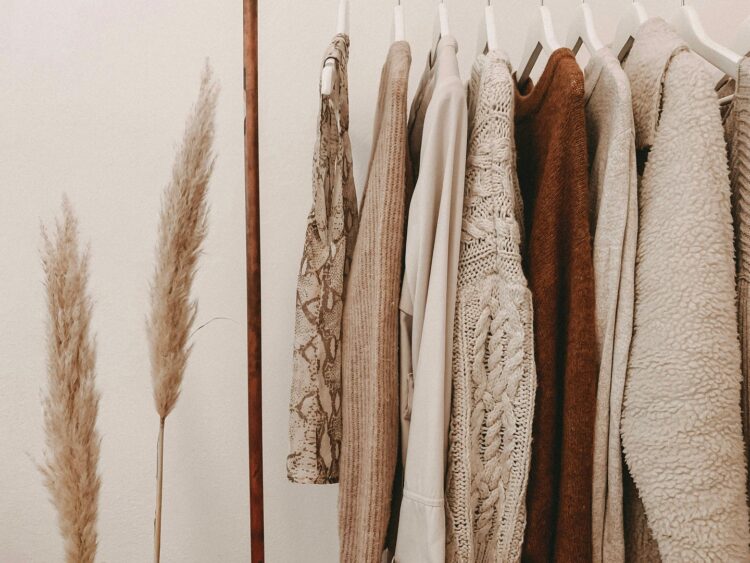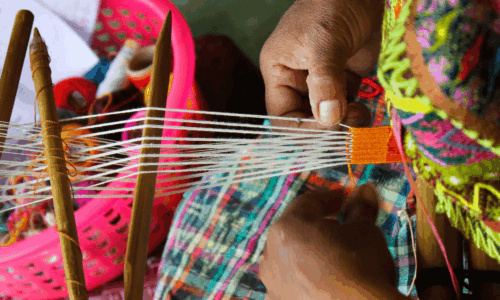Fashionistas, rebels, and accidental online shoppers, gather around! Today, we’re diving headfirst into the gladiator match of the century: Fast Fashion vs. Slow Fashion — a battle of speed, ethics, and whether your clothes will disintegrate after three washes.
Spoiler alert: One of them wins in the long run (literally), and the other just clogs landfills faster than your ex ghosted you.
Round 1: The Temptation Factor
Fast Fashion — The Tinder of Shopping
Fast fashion is the ultimate love-bombing experience. It lures you in with cheap prices, trendy designs, and that adrenaline rush of clicking “Add to Cart.” You see a micro-trend pop up on TikTok? Boom. Fast fashion brands like Shein, Zara, and H&M have it stocked before you can say, “Will I actually wear this?”
But much like a sketchy situationship, fast fashion leaves you feeling guilty. Those low prices come at a high cost — think underpaid workers, absurd textile waste, and fabric quality so bad your “satin” top might actually be plastic.
Slow Fashion — A Long-Term Relationship
Meanwhile, slow fashion is like that wholesome partner who actually texts back. It’s about quality over quantity, with brands taking the time to craft ethical, sustainable, and long-lasting pieces. Instead of chasing trends like a caffeinated squirrel, slow fashion embraces timeless designs, durable fabrics, and fair wages for the humans behind the seams.
Brands like Eileen Fisher, Patagonia, and Christy Dawn are the “green flags” of the industry. They prioritize organic materials, small-batch production, and, dare I say it, clothes that last more than one season. Shocking, I know.
Round 2: The Closet Cleanout Catastrophe
Fast Fashion — More Clothes, Less Space
Ever looked at your closet and thought, “I have nothing to wear,” while drowning in a mountain of $9 crop tops? That’s fast fashion’s doing. It convinces you that more is more — until you realize half your wardrobe consists of impulse purchases you wore once for an Instagram story.
Not to mention, the average American throws away 81 pounds of clothing every year. That’s basically an entire wardrobe’s worth of regret, sent straight to landfills. And no, your torn leggings from 2016 are not miraculously “biodegrading.”
Slow Fashion — Fewer, Better Choices
Slow fashion is the Marie Kondo of the industry. Instead of hoarding polyester nightmares, you invest in pieces that spark joy (and don’t shed microplastics into the ocean). Minimalism meets sustainability, and suddenly, your closet isn’t a war zone.
Even better? Some brands are flipping the script with rental services. Companies like Rent the Runway and Nuuly let you rock high-quality pieces for a month, return them guilt-free, and avoid the dreaded “one-time wear” disaster. Sustainable and stylish? Yes, please.
Round 3: The True Cost (a.k.a Your Bank Account’s Feelings)
Fast Fashion — Cheap Thrills, Expensive Consequences
Sure, fast fashion makes you feel like you’ve hacked the system. A $5 dress? A $10 blazer? What a steal! Until you realize those prices are made possible by questionable labor practices, cheap materials, and a production cycle that screams “bad decisions.”
And let’s not forget the cost per wear. That $15 trendy jumpsuit that ripped after two outings? Congratulations, you paid $7.50 per wear. Meanwhile, that $150 responsibly made sweater you’ve worn 30 times? That’s a humble $5 per wear — and still going strong.
Slow Fashion — The Investment Wardrobe
Slow fashion is the financially responsible friend who reminds you to “buy less, but better.” Investing in ethically made, high-quality clothes might seem pricey upfront, but your wardrobe won’t need a replacement every six months.
Pro tip: Secondhand and vintage shops are goldmines for slow fashion lovers. Check out ThredUp, The RealReal, or your local thrift store for designer deals and pre-loved pieces with character.
The Verdict: Who Wins?
Let’s be real. Fast fashion is a sugar rush, but slow fashion is a balanced meal. One leaves you feeling guilty and wasteful, while the other builds a sustainable wardrobe (and a cleaner conscience).
Does this mean you need to quit fast fashion cold turkey? Not necessarily. But small changes — like shopping secondhand, renting outfits, or supporting ethical brands — can help curb the madness.
So, the next time a fast fashion haul calls your name, just remember: That $3 shirt might cost the planet a whole lot more.
Fast fashion, slow fashion, sustainable fashion, ethical clothing, fashion industry waste, best slow fashion brands, fast fashion vs. slow fashion, clothing rental services, secondhand shopping, fashion sustainability




